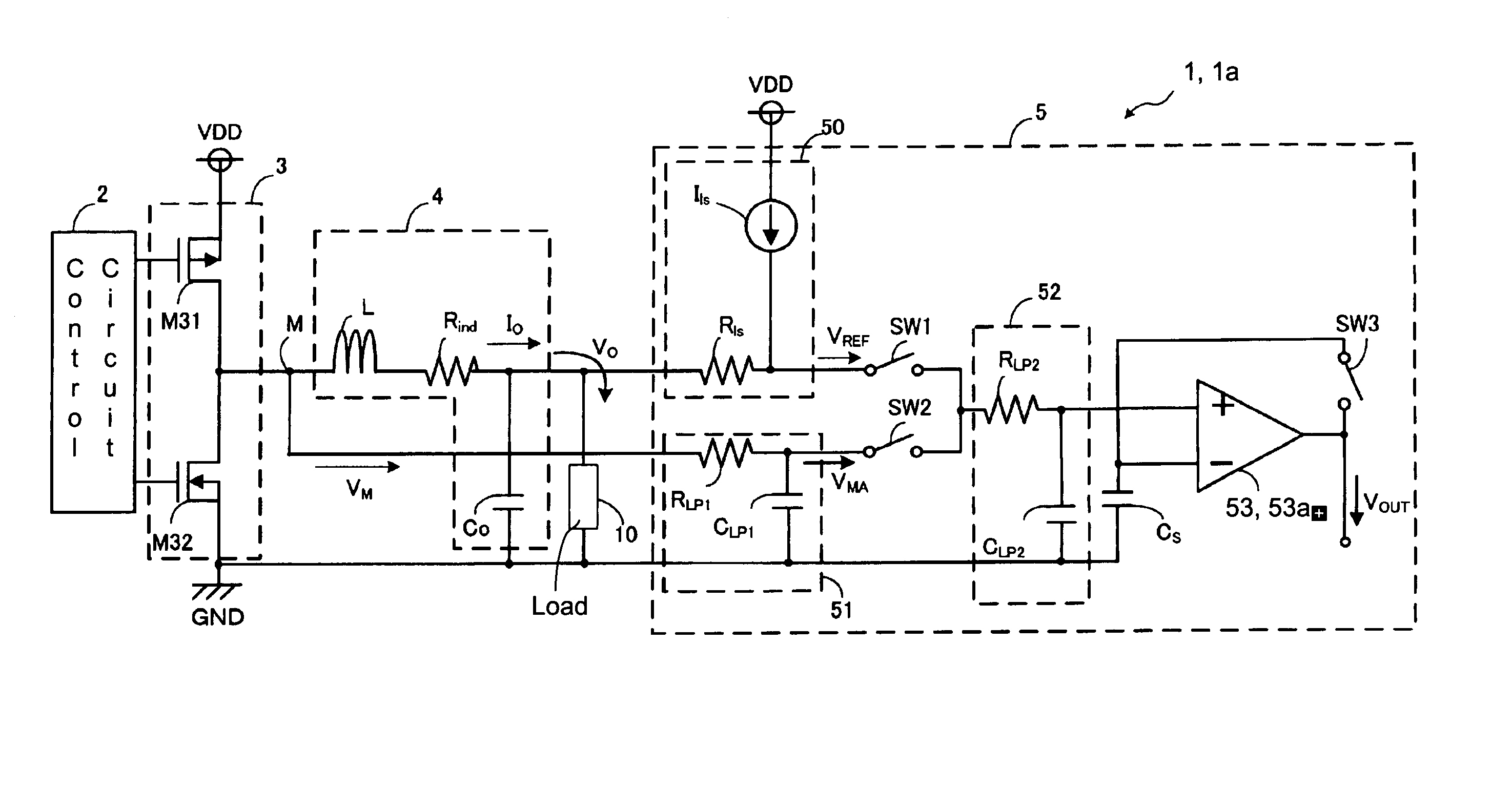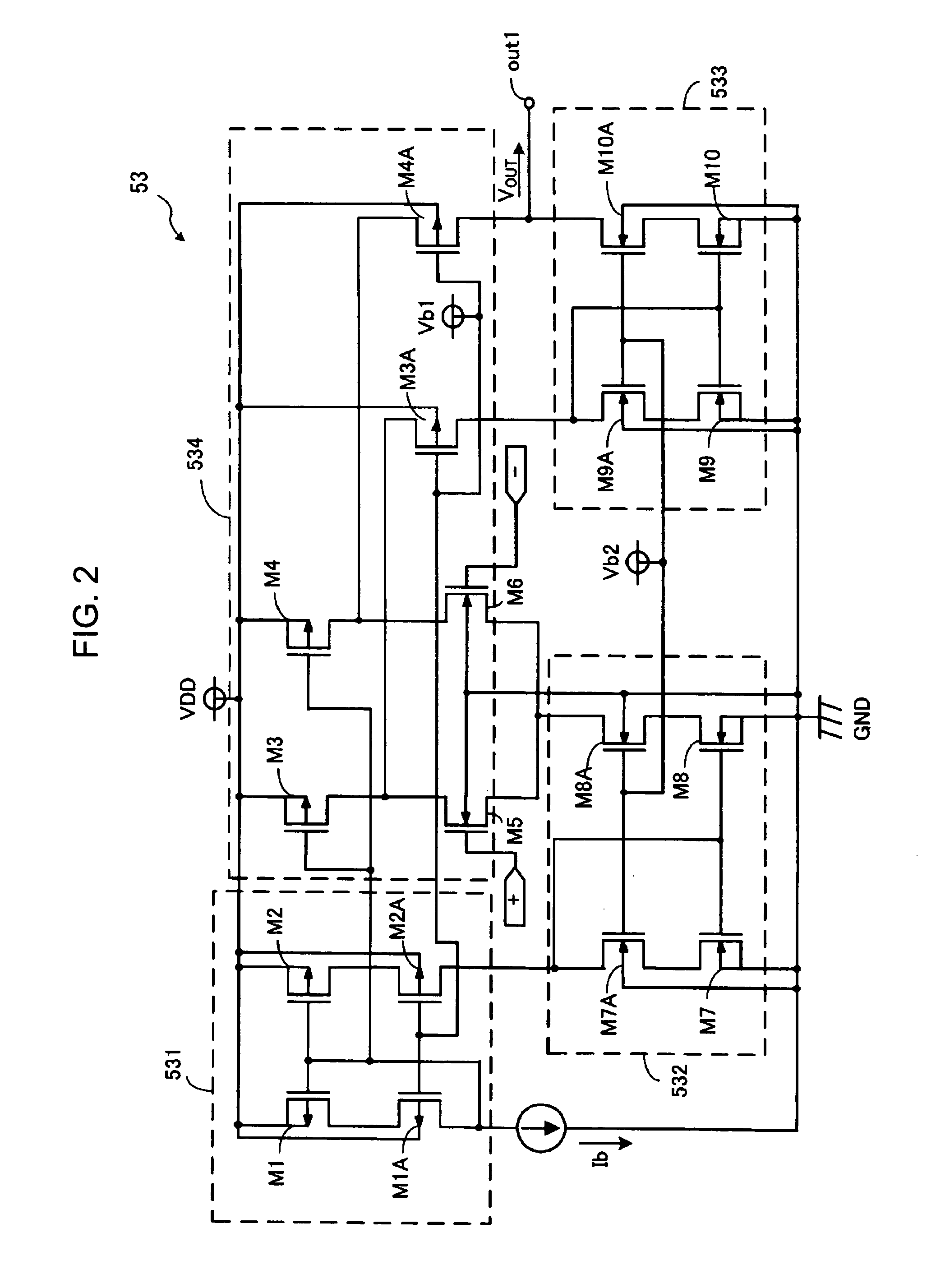DC to DC converter and voltage detecting circuit and current detecting circuit thereof
a technology of voltage detection circuit and detecting circuit, which is applied in the direction of pulse circuit, pulse manipulation, multiple input and output pulse circuit, etc., can solve problems such as unpractical devices, and achieve the effect of eliminating the influence of input offset voltage in the operational amplifier easily and securely
- Summary
- Abstract
- Description
- Claims
- Application Information
AI Technical Summary
Benefits of technology
Problems solved by technology
Method used
Image
Examples
first embodiment
[0032] As described above, in the DC to DC converter 1, instead of directly comparing the voltages VREF and VMA applied to the current detecting circuit 5, the capacitor CS is charged once with the voltage VREF and then the voltage VREF is compared with the voltage VMA. That is, the detecting method in the current detecting circuit 5 can be expressed by the following equation (5):
(VMA−ΔVIN)−(VREF−ΔVIN)=VMA−VREF (5).
[0033] Since the voltage held in the capacitor CS changes in accordance with the magnitude of the input offset voltage ΔVIN of the operational amplifier 53, the magnitude of the input offset voltage ΔVIN does not influence the result of the comparison. That is, the influence of the offset voltage ΔVIN of the operational amplifier 53 can be eliminated easily and securely. Thus, more accurate voltage detection can be carried out than in the case of inputting the voltages VREF and VMA to the comparator and comparing these voltages. That is, even if the offset voltage ΔVIN...
second embodiment
[0039] Referring to FIG. 3, which illustrates a circuit diagram of an operational amplifier 53a in the DC to DC converter 1a (second embodiment), the operational amplifier 53a has a two-stage amplification. The operational amplifier 53a has a constant-current circuit 531a, which includes NMOS transistors M15, M16, and M18, a differential amplification stage 532a, which includes PMOS transistors M13 and M14 and NMOS transistors M11 and M12, a PMOS transistor M17 forming the second amplification stage, and a phase compensation circuit 533a arranged between the gate and drain of the transistor Ml 7.
[0040] The phase compensation circuit 533a is arranged for providing phase compensation by Miller effect and has a switch SW11, a resistor RC and a capacitor CC connected in series in this order from the gate side to the drain side of the transistor M17, and a switch SW12 arranged between the drain-side terminal of the switch SW11 and the drain of the transistor M17. Each of the switches SW1...
PUM
 Login to View More
Login to View More Abstract
Description
Claims
Application Information
 Login to View More
Login to View More - R&D
- Intellectual Property
- Life Sciences
- Materials
- Tech Scout
- Unparalleled Data Quality
- Higher Quality Content
- 60% Fewer Hallucinations
Browse by: Latest US Patents, China's latest patents, Technical Efficacy Thesaurus, Application Domain, Technology Topic, Popular Technical Reports.
© 2025 PatSnap. All rights reserved.Legal|Privacy policy|Modern Slavery Act Transparency Statement|Sitemap|About US| Contact US: help@patsnap.com



